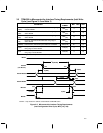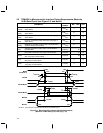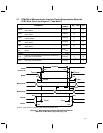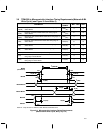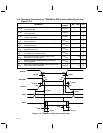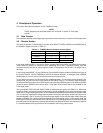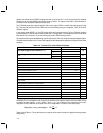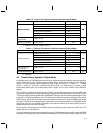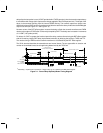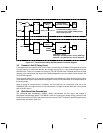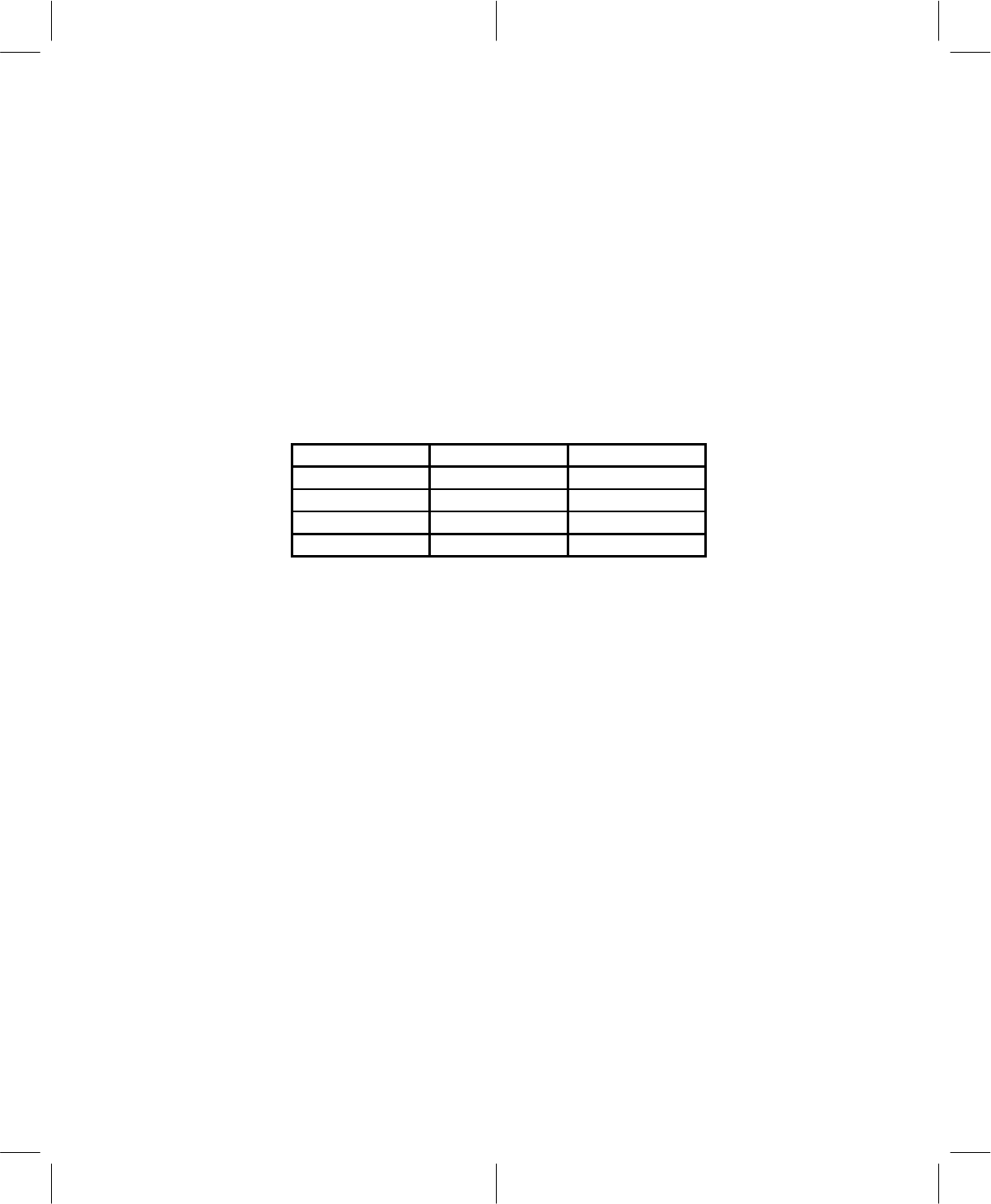
4–1
4 Principles of Operation
This section describes the operation of the TCM4300 in detail.
NOTE:
Timing diagrams and associated tables are contained in Section 3 of this data
manual.
4.1 Data Transfer
The interface to both the system digital signal processor and microcontroller is in the form of 2s complement.
4.2 Receive Section
The mode of operation is determined by the state of the MODE, FMVOX, IQRXEN, and FMRXEN bits of
the DStatCtrl register, as shown in Table 4–1.
Table 4–1. TCM4300 Receive Channel Control Signals
CONTROL SIGNAL ANALOG MODE DIGITAL MODE
MODE 0 1
FMVOX 1 0
IQRXEN 0 1
FMRXEN 1 0
In the digital mode (MODE=1), the receive section accepts RXIP, RXIN, RXQP, and RXQN analog inputs.
These inputs are passed to continuous-time antialiasing filters (AAF), baseband filtering, and A/D
conversion blocks, and then to sample registers where 10-bit registers can be read. The sample rate is
48.6 ksps.
In the analog mode (MODE = 0), the FMVOX bit of the DStatCtrl register enables or disables the Q side of
the receiver channel, and the FMRXEN bit controls the external functions. In the digital mode, IQRXEN
enables both the I and Q receive channels and external functions as well.
To save power, the receive I and Q channels are enabled separately. This operation occurs because in the
analog mode, only the Q channel is used. When the FMVOX bit is set to 1, it controls the input multiplexer,
connects the FM input to the receiver RXQP signal, and connects the RXQN signal to VHR. When the MODE
control bit and the IQRXEN control bit are set to 1, both sides of the receive channel are enabled for use
in the digital mode.
The input signals RXIP, RXIN and RXQP, RXQN are differential pair signals (see Table 4–2). Differential
signals are used to minimize the pickup of interference, ground, and supply noise, while maintaining a larger
signal level. In single-ended applications, the unused RXIN and RXQN terminals must be connected to VHR
or to an externally supplied bias voltage equal to the dc value of the input signal, and the input signal level
must be adjusted in the RF circuitry to provide the proper signal level so that the digital output codes are
properly calibrated (0.5 V peak-to-peak corresponds to full-scale digital output). In the analog mode, the
RXQN input is internally referenced to VHR. Alternatively, the unused inputs can be connected to VHR and
the used inputs can be capacitively coupled. Note that when the RX and FM inputs are capacitively coupled,
it is recommended that the input terminals be connected to VHR using a bias resistor.



